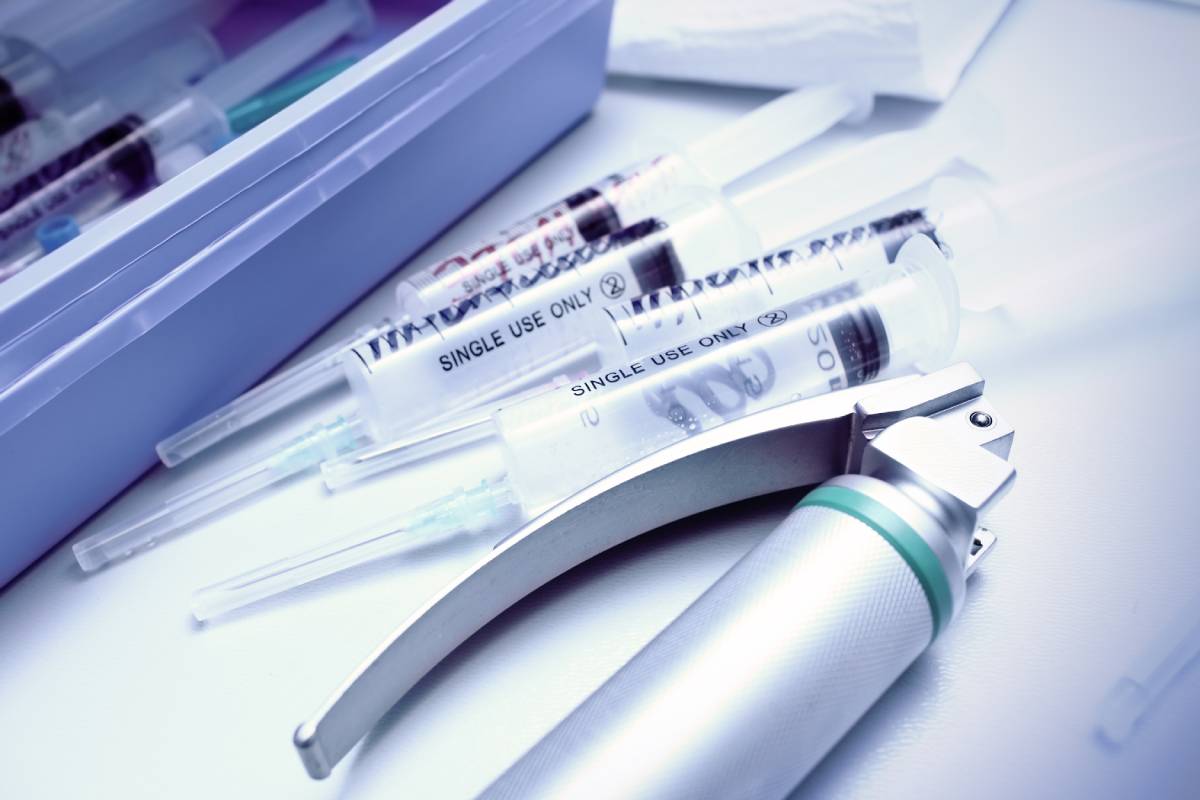The health care sector accounts for nearly 10% of US greenhouse gas emissions and 16% of the gross domestic product. US hospitals generate nearly 6 million tons of medical waste on an annual basis 1, to which anesthetic care, an equipment- and waste-intensive specialty, contributes substantially. Overall, disposable equipment has been favored given its ease of use and guarantee of sterility. However, other choices may be viable alternatives, including the use of reprocessed or reusable equipment. A quantifiable analysis of the cost, safety, and sustainably of anesthesia equipment is critical to balancing its economic and environmental costs in an empirically driven way. To this end, life cycle assessment 2 is an internationally accepted scientific method examining the manufacturing, use, disposal, and environmental dispersal of equipment that can be applied to anesthesia equipment specifically 3.
Both disposable and reusable items present trade-offs with regard to their ease of use and environmental costs. Disposable items reduce the risk of cross contamination between patients. This minimizes the economic and ecological costs of labor and resource-intensive cleaning procedures, while preventing the use of potentially environmentally toxic disinfecting solutions. In contrast, reusable items may be more reliable. Using reusable items reduces the manufacturing carbon footprint and waste that ends up in a landfill or incinerator, which itself also releases environmental toxins.
Studies have begun to show that the environmental cost of reusable equipment is overall lower than that of disposable equipment. A group from Yale-New Haven Hospital performed in 2012 a life cycle assessment comparing reusable versus disposable laryngeal mask airways. Results demonstrated that reusables had a more favorable environmental profile, reducing plastic production, packaging, and waste 4. Consistently, a more recent study from 2018 found that reusable laryngoscopes were more environmentally friendly, in addition to being more economically viable 5. Similarly, research on life cycle assessments of surgical equipment from German institutes found that reusable options resulted in lower CO2 emissions and water consumption 6,7.
However, some research has found the opposite trend. A research group from Australia found in 2012 that although reusable and sterilized central venous catheter insertion kits were cheaper, they were more environmentally costly, with higher rates of CO2 emission and water use 8. This same research group confirmed, in this study and later on, that the source of a medical facility’s energy, which varies greatly (e.g. coal-powered energy in Australia vs. nuclear-powered energy in Germany), has a significant impact on the environmental footprint of reusable items 9.
In the last two decades, equipment reprocessing has emerged as a novel option. Reprocessing companies take in used hospital equipment to clean it, ensure its Federal Drug Administration (FDA) acceptability, and resell it. To this end, the FDA currently requires that the reprocessing unit abide by a key set of regulations, ensuring in writing that the reprocessed medical device is equivalent to its original format. Examples range from surgical instruments, including laparoscopic surgical tools, to pulse oximeters, laryngeal mask airways, and blood pressure cuffs. Many hospitals have reported clear environmental and cost savings from reprocessing equipment. The Hospital Corporation of America, which counts over 160 member hospitals across the U.S., saved over $17 million in 2010, while preventing nearly 300 tons of waste from ending up in landfills.
However, reprocessing is not always clearly the most sustainable option for simple equipment, for which the environmental costs of cleaning, testing, repair, and transportation can outweigh the savings of not having to build a complicated new piece of equipment from scratch. Further independent research is warranted to dissect the sustainability of reprocessed anesthesia equipment in comparison to new or reusable equipment.
The manufacturing of both metals and plastics, while regulated by the Environmental Protection Agency (EPA), releases substantial environmental toxins. Such is also the case for the manufacturing of computer chips, which use over 1,000 different hazardous elements and remain in need of close regulation. Fortunately, however, by virtue of the Mercury-Containing and Rechargeable Battery Management Act of 1996, many batteries used in anesthesia and medical equipment can be and are readily recycled.
In light of the breadth of variables involved, a life cycle assessment allows for the identification of environmental costs, streamlining manufacturing, cleaning, or disposal processes to improve the environmental profile of anesthesia equipment. Leveraged as such to inform the acquisition and processing of equipment, life cycle assessments will likely become increasingly routine across a range of health care contexts, informing the selection and implementation of reusable, disposable, or reprocessed anesthesia equipment.
References
1. Chung, J. W. & Meltzer, D. O. Estimate of the carbon footprint of the US health care sector. JAMA – Journal of the American Medical Association (2009). doi:10.1001/jama.2009.1610
2. McGain, F., Story, D., Kayak, E., Kashima, Y. & McAlister, S. Workplace sustainability: The ‘cradle to grave’ view of what we do. Anesth. Analg. (2012). doi:10.1213/ANE.0b013e31824ddfef
3. ISO – ISO 14040:2006 – Environmental management — Life cycle assessment — Principles and framework. Available at: https://www.iso.org/standard/37456.html.
4. Eckelman, M., Mosher, M., Gonzalez, A. & Sherman, J. Comparative Life Cycle Assessment of Disposable and Reusable Laryngeal Mask Airways. Surv. Anesthesiol. (2013). doi:10.1097/01.sa.0000425549.82860.43
5. Sherman, J. D., Raibley, L. A. & Eckelman, M. J. Life Cycle Assessment and Costing Methods for Device Procurement. Anesth. Analg. (2018). doi:10.1213/ane.0000000000002683
6. Dettenkofer, M., Grießhammer, R., Scherrer, M. & Daschner, F. Life-Cycle Assessment of single-use versus reusable surgical drapes (cellulose/polyethylene – Mixed cotton system). Chirurg (1999). doi:10.1007/s001040050677
7. Adler, S., Scherrer, M., Rückauer, K. D. & Daschner, F. D. Comparison of economic and environmental impacts between disposable and reusable instruments used for laparoscopic cholecystectomy. Surg. Endosc. Other Interv. Tech. (2005). doi:10.1007/s00464-003-9232-4
8. McGain, F., McAlister, S., McGavin, A. & Story, D. A life cycle assessment of reusable and single-use central venous catheter insertion kits. Anesth. Analg. (2012). doi:10.1213/ANE.0b013e31824e9b69
9. McGain, F., Story, D., Lim, T. & McAlister, S. Financial and environmental costs of reusable and single-use anaesthetic equipment. Br. J. Anaesth. (2017). doi:10.1093/bja/aex098
